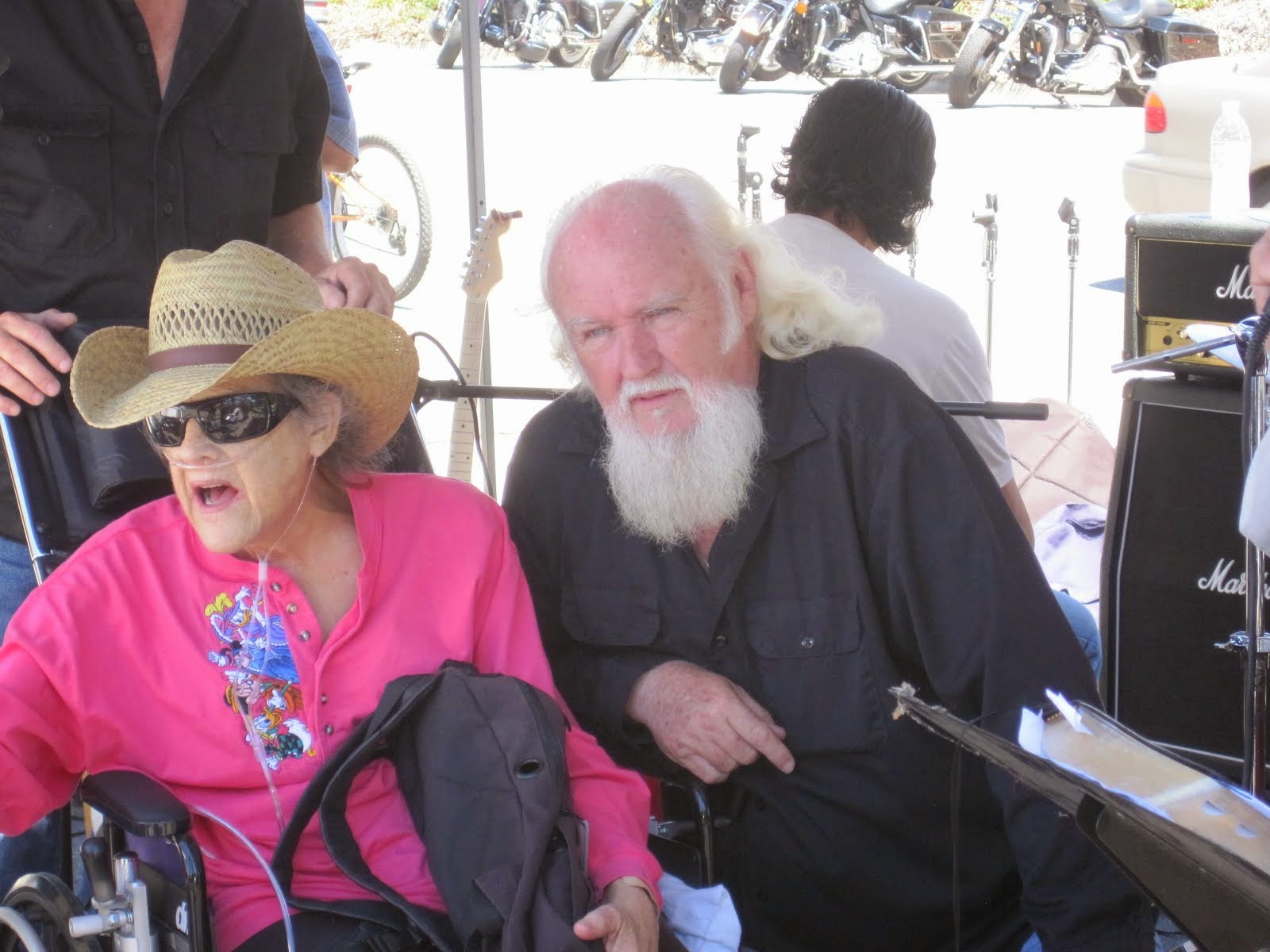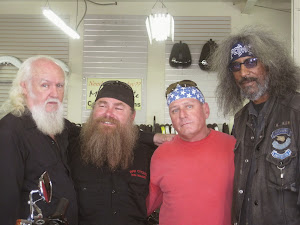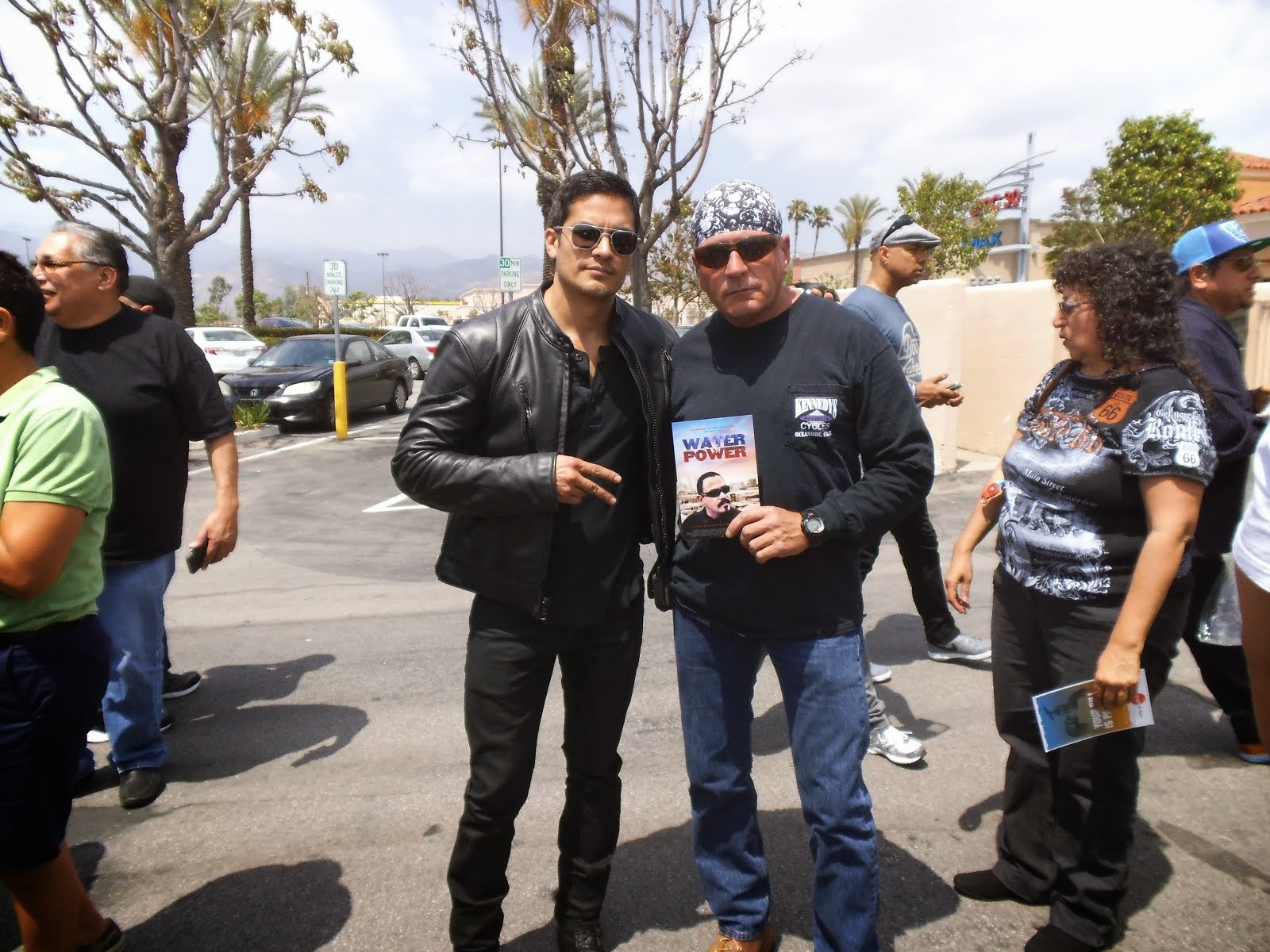OFF THE WIRE
http://billingsgazette.com/news/local/article_68b449c4-da64-11df-b951-001cc4c03286.html
Few argue that helmet use has obvious safety benefits, but riders resist mandate
Few argue that helmet use has obvious safety benefits, but riders resist mandate LORNA THACKERAY Of The Gazette Staff The Billings Gazette | Posted: Monday, October 18, 2010 12:00 am | (32) Comments
Font Size: Default font size Larger font size
LARRY MAYER/Gazette Staff Terry Jessee shows the dents and scrapes on the helmets he and his wife were wearing in a crash Aug. 14. Jessee said he believes that the helmets saved them from serious injury or death.
Safety message seems to be sinking in On Oct. 3, a 61-year-old Conrad man failed negotiate a sharp curve on Rodgers Pass east of Lincoln and became Montana’s 23rd motorcycle fatality this year.
Last year, motorcycle crashes killed 25 people in Montana. In 2008, the worst year ever for fatal motorcycle crashes, 38 people died, said Jim Lynch, director of Montana’s Department of Transportation.
The downward trend is encouraging, Lynch said. “A lot of people are making efforts to make it safer to drive on our highways,” he said.
Among them are people at DOT and those who teach and participate in motorcycle safety courses offered all over the state though Montana State University-Northern, he said. New riders are learning the skills they need to operate safely and experienced ones are getting refresher courses to sharpen their skills.
Col. Mike Tooley, chief of the Montana Highway Patrol, feels good about the improved safety record, too.
“What we’re seeing is an overall change
Full Story More Related: Free Wheelin' Terry Jessee’s helmet took a beating each time his head hit the road on the afternoon of Aug. 14 when he laid his Harley-Davidson motorcycle down trying to avoid a bicyclist who had suddenly turned in front of him on Story Road.
“I have an impression of rolling down the pavement like a pencil,” he said. “There were two clunks when my head hit the pavement and I felt them both. I remember thinking as I was rolling, ‘I’m going to be OK.’ ”
His wife, Cynthia, riding on the back, was also thrown from the Harley before tumbling to the edge of the pavement.
“When I stopped rolling, I hopped up and she’s lying on the side of the road not moving,” he said. “I’ve never been that scared in my life.”
The 57-year-old man on the bicycle was unresponsive when Jessee punched 911 into his cell phone.
Everyone escaped with non-life-threatening injuries — just an array of scratches, cuts and large and colorful bruises. Cynthia suffered the most. She had a broken bone in her wrist.
But it could have been a very different outcome, insists Jessee, who keeps as a reminder the dented and scraped helmet that cushioned his fall and the roll across the pavement. Each of those dents and scrapes could have left a deadly impression on a bare head.
“Except for that helmet, I wouldn’t be here,” he said during a recent interview. “I really do believe that I would be dead or still in the hospital.”
Without her helmet, his wife would have landed on her face, he said. The helmet and visor prevented not only injury but also disfigurement.
In 40 years of riding, Jessee said, he’s been down three times — once without a helmet on a soft-dirt landing. He escaped with a concussion. In the two other incidents, helmets took the brunt of crashes that could have killed or disabled him, he said.
Jessee swears by his helmet, as do thousands of other Montanans who never start their engines without a DOT-approved helmet protecting their heads. But like a lot of others, he has mixed feelings about whether Montana should have a law requiring motorcyclists to wear them.
“I’m not certain if I’m interested in a mandatory helmet law,” he said. “If it’s mandatory for motorcycles, what about skiers? What about skateboarders? You can’t protect people from everything.
“The other side of it is: If you don’t wear a helmet, should the rest of us have to pay for your medical care? My attitude is if you don’t wear a helmet and you get hurt, you go home and die. That’s harsh, but if you want to absorb the risk of not wearing a helmet, you absorb the whole risk and don’t make the rest of us absorb the cost.”
Montana law requires that operators and passengers under the age of 18 wear headgear that meets state standards. Adults can ride with the wind in their hair and grasshoppers in their teeth. Judging by information gathered last year in Montana, a lot of motorcyclists don’t wear them. Just 12.3 percent of motorcyclists involved in crashes in 2009 wore helmets. None of three people who died in motorcycle accidents in Yellowstone County in 2009 had head gear.
Every state has struggled with the question of mandatory helmet laws. Just 20 states require all riders to have helmets, while most of the rest require helmets for specific population segments like riders under the age of 18. Illinois, Iowa and New Hampshire do not have helmet requirements.
The debate often comes down to a question of personal freedom balanced against the cost of caring for motorcyclists who sustain head injuries.
There are crashes that would not be survivable regardless of helmet use, and there are occasional stories where a driver claims that wearing a helmet caused an injury. But overwhelming statistical information shows that helmets do save lives and prevent serious injury.
According to numbers from the National Highway Traffic Safety Administration in 2008, “an unhelmeted motorcyclist is 40 percent more likely to suffer a fatal head injury and 15 percent more likely to suffer a nonfatal injury than a helmeted motorcyclist involved in a crash.”
NHTSA also said that helmets reduce the likelihood of crash fatality by 37 percent and that helmets are 67 percent effective in preventing brain injuries. Those without helmets are three times more likely to suffer brain injuries.
The same study said that when Florida repealed its universal ride motorcycle helmet law in 2002, deaths increased 24 percent over expectations and hospital admissions went up 40 percent for motorcyclists involved in crashes. Similar increases in fatalities were reported in Arkansas (21 percent) and Texas (31 percent) in the year after those states weakened their universal helmet laws.
NHTSA’s report also said that costs to treat head injuries as a primary diagnosis more than doubled to $22 million. Hospital discharge data showed that 63 percent of motorcycle head injury patients had private insurance, 16 percent paid the bill themselves and the remaining 21 percent were paid for by charitable and public resources.
The report estimates that helmet use saved $19.5 billion in economic costs between 1984 and 2002, and that an additional $14.8 billion could have been saved if everyone on a motorcycle had worn a helmet.
In 2007, the National Transportation Safety Board recommended that all states adopt universal helmet-use laws, but resistance is strong in many states, including Montana.
Billings motorcyclist Dick Russell, a stickler for safety, always wears a helmet and all recommended safety gear. He’s taken motorcycle safety courses through Montana State University-Northern to augment his 40 years of experience.
About 20 years ago, he bounced his head on the pavement in a motorcycle crash that cracked his helmet.
“That probably could have had a way different outcome without it,” he said.
But Russell, like many Montanans, remains ambivalent about putting mandatory helmet use in the law.
“If I had to vote on it, I would probably vote no,” he said. “Do I think it’s smarter to wear a helmet? Probably yes.”
skip to main |
skip to sidebar




Bill & Annie

Art Hall & Rusty


NUFF SAID.......


































































OOHRAH

ONCE A MARINE,ALWAYS A MARINE

GIVING BACK


MOUNT SOLEDAD














BIKINI BIKE WASH AT SWEETWATER










FRIENDS





BILL,WILLIE G, PHILIP










GOOD FRIENDS


hanging out

brothers


GOOD FRIENDS

Good Friends

Hanging Out




Bill & Annie
Art Hall & Rusty
Art Hall & Rusty


NUFF SAID.......



















NUFF SAID......



























Mount Soledad




BALBOA NAVAL HOSPITAL
RUSTY DANNY

ANNIE KO PHILIP

PHILIP & ANNIE

OUT & ABOUT

OOHRAH...

OOHRAH
ONCE A MARINE,ALWAYS A MARINE

ONCE A MARINE,ALWAYS A MARINE
American Soldier Network GIVING BACK

GIVING BACK
CATHY & BILL
PHILIP & DANNY & BILL

MOUNT SOLEDAD
bills today
EMILIO & PHILIP
WATER & POWER
WATER & POWER
bootride2013



BIKINI BIKE WASH AT SWEETWATER







ILLUSION OPEN HOUSE

FRIENDS


GOOD FRIENDS



BILL,WILLIE G, PHILIP









GOOD FRIENDS

GOOD FRIENDS
Friends
- http://www.ehlinelaw.com/losangeles-motorcycleaccidentattorneys/
- Scotty westcoast-tbars.com
- Ashby C. Sorensen
- americansoldiernetwork.org
- blogtalkradio.com/hermis-live
- davidlabrava.com
- emiliorivera.com/
- http://kandymankustompaint.com
- http://pipelinept.com/
- http://womenmotorcyclist.com
- http://www.ehlinelaw.com
- https://ammo.com/
- SAN DIEGO CUSTOMS
- www.biggshd.com
- www.bighousecrew.net
- www.bikersinformationguide.com
- www.boltofca.org
- www.boltusa.org
- www.espinozasleather.com
- www.illusionmotorcycles.com
- www.kennedyscollateral.com
- www.kennedyscustomcycles.com
- www.listerinsurance.com
- www.sweetwaterharley.com

Hanging out

hanging out
Good Friends

brothers
GOOD FRIENDS

EMILIO & SCREWDRIVER

GOOD FRIENDS
Danny Trejo & Screwdriver

Good Friends
Navigation
Welcome to Bikers of America, Know Your Rights!
“THE BIKERS OF AMERICA, THE PHIL and BILL SHOW”,
A HARDCORE BIKER RIGHTS SHOW THAT HITS LIKE A BORED AND STROKED BIG TWIN!
ON LIVE TUESDAY'S & THURDAY'S AT 6 PM P.S.T.
9 PM E.S.T.
CATCH LIVE AND ARCHIVED SHOWS
FREE OF CHARGE AT...
BlogTalkRadio.com/BikersOfAmerica.
Two ways to listen on Tuesday & Thursday
1. Call in number - (347) 826-7753 ...
Listen live right from your phone!
2. Stream us live on your computer: http://www.blogtalkradio.com/bikersofamerica.
A HARDCORE BIKER RIGHTS SHOW THAT HITS LIKE A BORED AND STROKED BIG TWIN!
ON LIVE TUESDAY'S & THURDAY'S AT 6 PM P.S.T.
9 PM E.S.T.
CATCH LIVE AND ARCHIVED SHOWS
FREE OF CHARGE AT...
BlogTalkRadio.com/BikersOfAmerica.
Two ways to listen on Tuesday & Thursday
1. Call in number - (347) 826-7753 ...
Listen live right from your phone!
2. Stream us live on your computer: http://www.blogtalkradio.com/bikersofamerica.
Good Times
Hanging Out

Key Words
- about (3)
- contact (1)
- TENNESSEE AND THUNDER ON THE MOUNTAIN (1)
- thinking (1)
- upcoming shows (2)
Blog Archive
-
▼
2010
(4242)
-
▼
October
(447)
- Police continue to harass citizens who record them
- Two Notorious bikie gang members arrested after ba...
- Australia, Iron bar killer jailed for 11 years
- CHARLESTON, W.Va.Two former Pagans sentenced to pr...
- Mob turncoat is sentenced in NYC to time served
- WASHINGTON DC, Motorcycle Group Supports Military ...
- AUSTRALIA, Bikie gang threat can't be ignored
- Hells Angels to sue McQueen
- Johnston City, Ill. Deputies arrest Outlaws member...
- NEW YORK:Bikers in Halloween Costumes Terrorize Up...
- Hello San Diego Volunteers
- Richmond, Va.Jury to begin deliberations in Outlaw...
- Drug accusations fly in court
- Pagans case: School bus driver who helped discard ...
- A BIKER, brawl in the heart of Bondi has left one...
- Poker run benefits Hillsborough Vietnam memorial
- Outlaws gang trial to resume Friday
- Court documents: Santa Clara cop did favors for He...
- OMCG member charged over two shootings – Petersham
- Massachusetts, Settlement gives bikers refunds
- THE top two leaders of bikie gang Notorious will r...
- Two former Pagans sentenced to probation on drug-r...
- Can ATK Cruisers Help Harley-Davidson?
- It’s A Club! Not A Gang!
- November 4th - 7th 10th Annual Rocky Point Rally.
- What is Compromise?
- Barry & Carol Sandberg Murders,PRESS RELEASE
- Oregon,Charitable Biker Event Incites 'Criminal Pr...
- The Hells Angels motorcycle gang sues Alexander Mc...
- Outlaw Country,
- Quote!!!!!!!!!!!!
- VIRGINIA:Update: Outlaws gang trial to resume Friday
- TENNESSEE:Good Samaritan chases down suspected pur...
- RICHMOND, Va. Biker gang member disputes revenge s...
- PORTLAND, Maine, Outlaws motorcycle gang member p...
- Richmond, Va, No verdict yet in Va. biker gang trial
- Tennessee, Man chases two suspects in N. Knox pur...
- ARIZONA:This Week
- Hells Angels set for rumble on the catwalk
- CALIFORNIA:2011 Iron & Lace Custom Motorcycle Pinu...
- Outlaws Motorcycle Gang Member Pleads Guilty
- Stop Complying and Start Defying
- "INCITY TIMES" PUBLISHER IN MY CROSS HAIRS!!!!
- Boston Cop Pietroski, interesting case
- Texas, Bar owners say patrons were not involved in...
- Southern California Biker Information Guide Newsle...
- MEXICO CITY,Every cop in town quits after Mexico a...
- RICHMOND, Va. Biker Gang Trial Wrapping Up In Va.
- Biker gangmember disputes revenge story
- JACKSONVILLE,FLA, Armed Forces Bike Run set
- UPDATE: Defense rests in federal trial of Outlaws ...
- Insurance companies to reimburse overcharged motor...
- Guns! Prostitution! MURDER! This New Ron Klein Spo...
- ABATE web site & Volunteer for Candidates
- AMA:Election Day is Tuesday, Nov. 2 More Info
- I ended up with a list in two commercial breaks of...
- F.Y.I. GOOD READING
- Gang member testifies he was ordered to get even w...
- Informant at Va. biker trial talks of gang 'war'
- High-ranking Comanchero charged over two strike fo...
- Pratt, Kansas, Not your average outlaw biker gang
- Virginia, Bar-B-Q arsonist must pay $25,600
- Richmond, VA, Ex-biker gang member describes alleg...
- LOS ANGELES, CA, Hells Angels v SaksHells Angels ...
- Texas, Bandidos blamed in fight outside isle bar
- Virginia - Richmond, Gang members testify against ...
- How a nerve poison became "food"
- Hells Angels Sue Saks, McQueen Design, Over Trademark
- Australia, No gun found in bikie headquarters raid
- AZ: Police will use digital cameras mounted on the...
- House Rule, H.R 4646
- AG wants to ban drink that hospitalized CWU students
- Australia, Three men bailed over Centrefold Lounge...
- Australia, Another man arrested over Zervas shooting
- Australia, High-ranking Comanchero charged over tw...
- VENTURA, CA, Hells Angel president sentenced
- Virginia, Informant speaks of 'war' with rival gang
- Former Outlaws testify as trial continues
- Canada,Police tight-lipped over reported prison sc...
- Tinley Park biker lives on through the story of hi...
- Australia, Another man charged following investiga...
- Canada, Police tight-lipped over reported prison s...
- READERS SHARE: CHECK THIS OUT
- Trial underway of Milwaukee motorcycle gang leader
- WISCONSIN, Motorcyclists to rev up for Toys for To...
- MANSFIELD, OHIO, Richland County Health Department...
- OHIO: COUNTY HEALTH DEPARTMENT RECEIVES GRANT
- CA, San Jose audit raps cop-car commuting
- October 30, 2010 "RIDE" to Stop Violence Benefit P...
- Redding, CA, Police get grant for traffic safety
- California, Traffic enforcement focus of grant to ...
- More fuel for the fire? Article in the paper
- Wall Street Journal on Obama
- F.Y.I, CA: 7 classes offered for fall at college
- New Zealand, All quiet as bikers roll into town
- Australia, Bikies not all baddies, says magistrate
- F.Y.I. Check This Out, Know how to tell the differ...
- NHTSA and Motorcycle Only Checkpoints
- Robbery Ring Disguised as Drug Raids Nets Convicti...
- Australia, Biker`s wanted over strip club fight
-
▼
October
(447)
Bikers of America, Know Your Rights!... Brought to you by Phil and Bill
Philip, a.k.a Screwdriver, is a proud member of Bikers of Lesser Tolerance, and the Left Coast Rep
of B.A.D (Bikers Against Discrimination) along with Bill is a biker rights activist and also a B.A.D Rep, as well, owner of Kennedy's Custom Cycles
